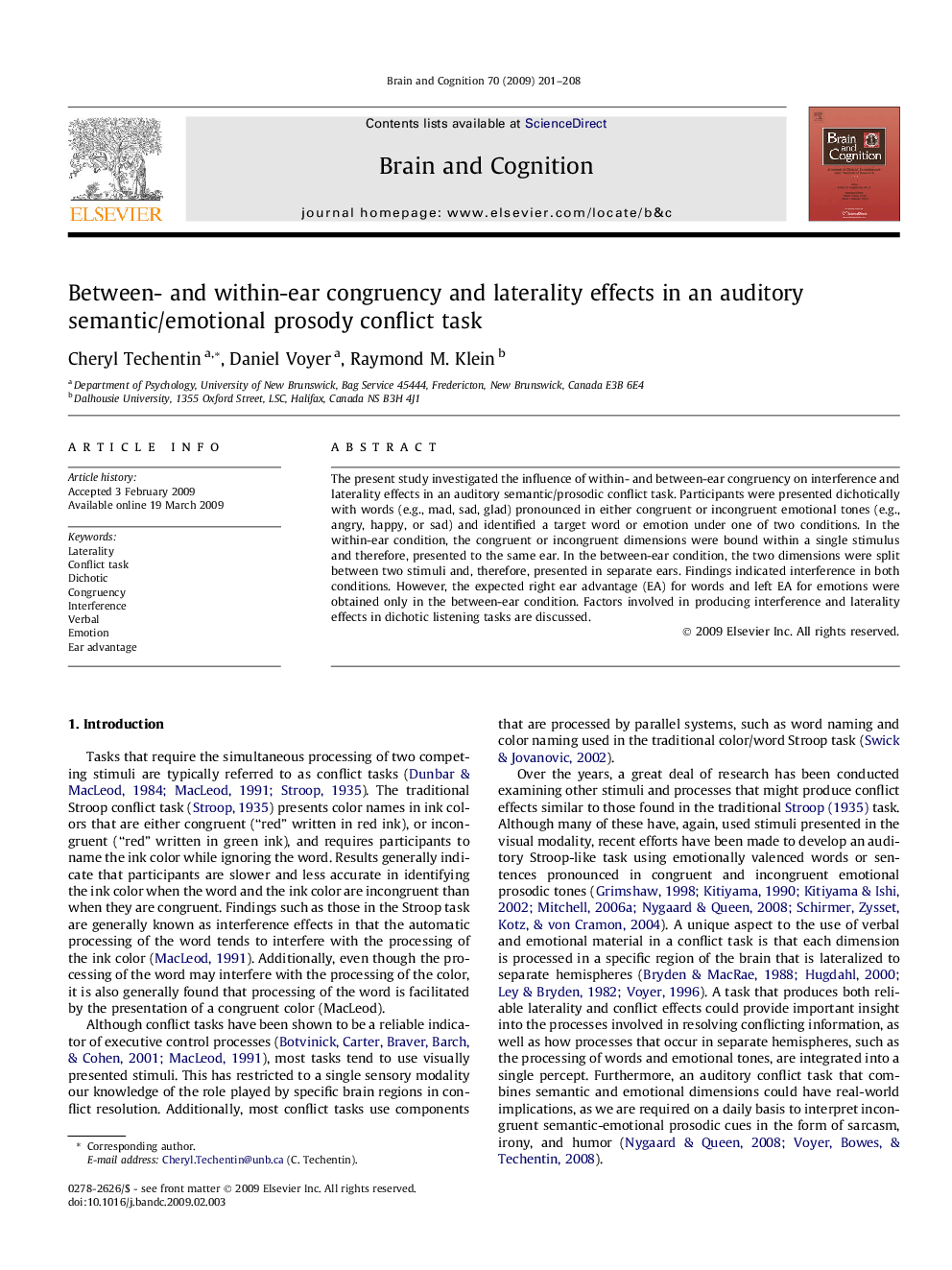| Article ID | Journal | Published Year | Pages | File Type |
|---|---|---|---|---|
| 924885 | Brain and Cognition | 2009 | 8 Pages |
The present study investigated the influence of within- and between-ear congruency on interference and laterality effects in an auditory semantic/prosodic conflict task. Participants were presented dichotically with words (e.g., mad, sad, glad) pronounced in either congruent or incongruent emotional tones (e.g., angry, happy, or sad) and identified a target word or emotion under one of two conditions. In the within-ear condition, the congruent or incongruent dimensions were bound within a single stimulus and therefore, presented to the same ear. In the between-ear condition, the two dimensions were split between two stimuli and, therefore, presented in separate ears. Findings indicated interference in both conditions. However, the expected right ear advantage (EA) for words and left EA for emotions were obtained only in the between-ear condition. Factors involved in producing interference and laterality effects in dichotic listening tasks are discussed.
